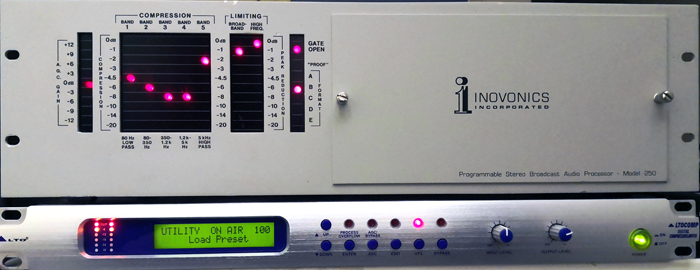
We’ve spent a great deal of time and money creating a high quality sound for TD9 Radio, however in this day of smartphones, tablets and other portable devices, quality is often lost due to the size of the speaker on the device as it simply can’t reproduce the original sound. In some respects, it takes the listener back to days of the portable transistor radio or “tranny” as it became affectionately known as in the 60s.
We’re passionate about radio, music and quality and to that end, you won’t find an MP3 anywhere in our studio. Quality is the keyword – and as a result, we use only use high resolution WAV files taken from original CD recordings. (We do sometimes use vinyl too, but we try to keep this to a minimum and the crackles make it sound authentic anyway).
To get the full benefit of our high quality sound and the full frequency range that TD9 Radio offers, we recommend listening on good quality Hi-Fi speakers or headphones. If you have a soundbar you might also want to try playing us through that either via Bluetooth or by plugging in leads from your smart device.
If you have that old ‘retro’ amp stashed away in the attic, why not dig it out, along with your speakers and hear radio the way it was intended, in proper Hi-Fi sound.
Most smart devices (including smart speakers) have a 3.5mm headphone jack that can be plugged into an amplifier or a soundbar and will usually give a much better sound than the original device you are using.
As always, we love to hear from our listeners, because without you, there would be no TD9 Radio. If you have a comment or a suggestion about the TD9 sound, do please get in touch through our Contact Us page.
Extra Reading
For the technical buffs amongst you, we use analogue sound in every part of our audio processing chain. The sound from our computers is converted from a digital WAV file to an analogue format. We use Rivendell Radio Automation which runs on a variation of Linux called CentOS7. This is passed through an analogue mixing desk for live on air operation. During our unattended operation (like through the night when there is no live DJ), the sound is routed through an analogue switching matrix to our audio processors which also handle our live output too. This also allows us to ‘split’ our programming, so you can listen to the live rugby on TD9 Radio 2 (for example), while the music programmes continue on TD9 Radio 1.

For that ‘retro’ sound we use an Inovonics 250 stereo broadcast audio processor that was first introduced in 1982 and was renowned world-wide for its ground-breaking sound at the time. This unit, in conjunction with other hardware and software, produces the final sound.